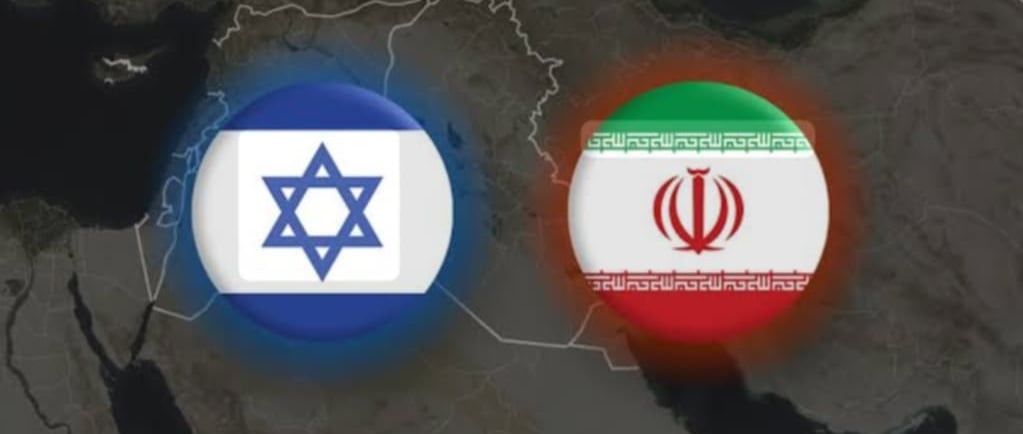The High Cost of Conflict: A War Between Israel and Iran
NEWSOTHER NEWS
6/24/20254 min read


The High Cost of Conflict: A War Between Israel and Iran
The direct military confrontation between Israel and Iran, while thankfully curtailed by a recent ceasefire, has already imposed a heavy and multifaceted cost on both nations and cast a shadow over the global economy. Beyond the immediate destruction and human casualties, the conflict has exacerbated existing vulnerabilities, strained national budgets, and injected profound uncertainty into an already volatile region.
Humanitarian Toll: The Unspeakable Price
The most tragic and undeniable cost of this conflict is the human toll. While exact figures are still emerging and often disputed, reports indicate a significant loss of life and widespread injuries on both sides.
Iran: The Human Rights Activists News Agency (HRANA) reported at least 865 lives lost in Iran, with a breakdown including military personnel, civilians, and unidentified individuals, and over 3,396 wounded. These figures are considerably higher than official Iranian health authority reports, which still indicate hundreds of deaths and thousands of injuries, primarily among civilians. Israeli airstrikes, initially targeting military sites, increasingly impacted residential areas, leading to mass internal displacement of millions. Healthcare facilities have been damaged, and medical staff have been killed while performing their duties.
Israel: Iranian missile strikes tragically killed at least 24 civilians and injured nearly 600 others. The southern city of Beersheba bore the brunt of some of the most recent barrages, with significant casualties and property damage.
Beyond direct casualties, the psychological toll on populations living under constant threat of missile attacks and airstrikes is immense, leading to widespread trauma and disruption of daily life.
Economic Fallout: Billions Drained, Futures Jeopardized
The financial burden of this conflict is staggering for both nations, especially considering their distinct economic realities.
For Israel:
Direct Military Expenditure: A month-long war was estimated to cost Israel around $12 billion, with daily military expenses averaging $725 million. This includes the massive cost of defensive measures, such as its multi-layered air defense systems (Iron Dome, David's Sling, Arrow 2 and 3), where the daily cost of anti-missile air systems alone could range from $10 million to $200 million.
Property Damage: The cost of property damages from Iranian missile and drone attacks has been estimated at approximately $1.47 billion (NIS 5 billion), double the sum of claims from the October 7 attack and subsequent fighting. This includes residential buildings reduced to rubble and widespread shattered windows.
Economic Disruption: The conflict has directly impacted Israel's production activities. Critical infrastructure in Tel Aviv and Haifa was targeted, with one attack temporarily shutting down the Bazan oil refinery, causing an estimated daily loss of $3 million. Ben Gurion Airport also suspended operations in response to Iranian retaliatory strikes.
Budgetary Strain: Israel's budget deficit is expected to rise. The Ministry of Finance has requested substantial funds for the Ministry of Defense, while also proposing cuts from critical sectors like health, education, and social services, highlighting the difficult trade-offs forced by wartime spending.
Increased Defense Spending: In 2024, Israel's military expenditure surged by a staggering 65% to $46.5 billion, representing 8.8% of its GDP – the steepest annual increase since the Six-Day War in 1967 and the second highest military burden globally.
For Iran:
Deepening Economic Crisis: Even before the recent conflict, Iran faced a dire infrastructure crisis, requiring over $500 billion in investments to address shortfalls exacerbated by decades of U.S. sanctions. Israeli attacks have further deepened this crisis, destroying vital civilian and energy infrastructure. The direct costs of reconstruction could run into tens of billions of dollars.
Impact of Sanctions: Iran's economy has been significantly weakened by extensive international sanctions, making it less resilient to external shocks. These sanctions have led to high inflation, currency devaluation, and a decline in real incomes, pushing more of the population into poverty. The war exacerbates these existing pressures, with experts predicting devastating consequences for the economy and a potential surge in prices of goods and commodities due to supply shocks.
Limited Fiscal Resources: Sanctions have severely limited Iran's capacity to increase spending, including on its military, which some analysts suggest increases its vulnerability to external aggression.
Humanitarian Crisis: A prolonged conflict would only exacerbate Iran's humanitarian crisis, with over 80% of Iranians already failing to meet daily caloric requirements and suffering from food insecurity.
Global Ripple Effects: Beyond the Front Lines
The conflict's economic consequences extend far beyond Iran and Israel, threatening global stability.
Energy Prices: The primary global concern revolves around oil prices. Any disruption or even the threat of disruption to oil supplies from the Middle East, particularly through the vital Strait of Hormuz, can send prices skyrocketing. A sustained increase to $150 per barrel could shrink global GDP by nearly $1 trillion annually, leading to "stagflation" reminiscent of the 1970s.
Supply Chain Disruptions: The conflict has impacted global shipping, forcing companies to reroute vessels and leading to delays and increased import costs. This directly affects supply chains for goods and humanitarian aid worldwide.
Investor Uncertainty: Geopolitical instability in such a critical region deters investment, as businesses become more risk-averse, impacting global capital flows and economic growth.
Tourism Impact: The Middle East's once-thriving tourism sector has faced significant cancellations due to international travel warnings and perceived insecurity, dealing a severe blow to economies reliant on this industry.
Regional Instability: The conflict has destabilized neighboring countries like Lebanon, Gaza, and Jordan, who face increased fuel prices, disrupted trade routes, and a surge in displaced populations. This regional instability has profound economic, social, and psychological costs.
Cyber Warfare Threats: The potential for Iran to launch cyberattacks on critical infrastructure in the U.S. or other nations (power grids, water systems, financial networks) could have economic consequences ranging from hundreds of billions to over a trillion dollars.
US Financial Burden: The United States, a key ally to Israel, bears a significant financial burden. In the year following October 2023, the U.S. provided an additional $17.9 billion in military aid to Israel, the highest annual total ever. Any deeper U.S. involvement in a prolonged conflict could add trillions to its already burgeoning national debt.
Conclusion: A Heavy Price for All
The war between Israel and Iran, regardless of its duration or intensity, imposes an immense and multifaceted cost. From the tragic loss of human life and the destruction of infrastructure to the severe economic strain on both nations and the ripple effects across the global economy, the price of this conflict is exceptionally high. While ceasefires offer temporary relief, the underlying geopolitical tensions and their devastating consequences serve as a stark reminder of the urgent need for sustained diplomatic efforts and long-term solutions to ensure stability in this volatile and strategically vital region.
